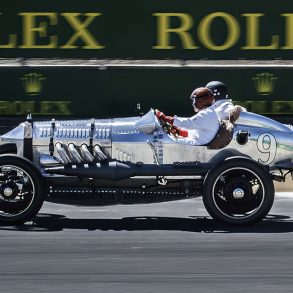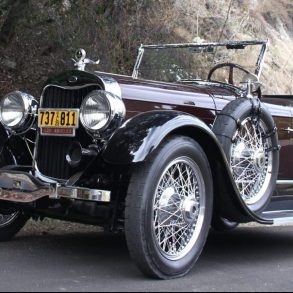OK, see if any of this sounds familiar: I have a racecar in the garage. Well, let me clarify that, I have six crates of parts in my garage. After, I’m ashamed to say, years of business, house remodeling, family commitments, and general inertia, I’ve finally started working on my racecar again… Sadly, it couldn’t have felt more foreign.
The impetus for this sudden burst of mechanical enthusiasm was the phone call that, after a couple of years imprisonment at a friend’s shop (being essentially “re-bodied”), my car was being painted and, therefore, would be coming home soon. Hurray! Now what? Hmmm, guess I better start sifting through all those boxes.

Once my garage was suitably cleaned and organized, I started sifting through the boxes of parts that once were my racecar. Each of the six crates was filled with countless Ziploc Baggies marked with indecipherable scratchings on them like, “L__ F_ ste ___ CAREFUL!” Well, that’s helpful. Apparently, oil is the only substance, known to mankind, capable of erasing indelible pen off Baggies!
Looking at all these cryptic Baggies filled with tiny pieces made me realize how dangerous enthusiasm can be. A handful of years ago, when I acquired the car, I was so enthusiastic about restoring it and getting it back on the track that I tore into it with zeal. I had the body shell stripped down in just a few days and, knowing that this should only take me a few months of work (hah!), immediately disassembled every component of the car for restoration. I’ve restored a pretty wide variety of cars, so everything made logical sense, as I took it apart and carefully placed the components in marked Baggies. However, four years later, I re-opened those flexible, plastic, time capsules, like an amnesiac opening his wallet for the very first time. What’s this? How’d this get here? I don’t remember this…
I swear it’s like learning to walk again. I started with the things I thought I knew the best, like reassembling the carburetors and the engine, but inevitably I’d get a component 60–70% assembled before having a divine vision that would remind me of something I did wrong or left out. Two steps forward, one step back.
Over the coming week, as I spent more time in the garage, some things began to come back to me quickly…like what it feels like to buzz the ends of your fingers off on the wire wheel, or how far a circlip can launch across the garage and into utter oblivion. Other things, like how to properly install my camshaft, took a bit more time. I was actually feeling pretty good about the way things were going. I had the crank, rods, and pistons installed—hadn’t injured myself too badly—and had moved on to the camshaft. Pretty straightforward, wouldn’t you think? Put it in the block, attached the thrust spacer, bolt on the timing gear, and you’re there. Well, at least that’s what I remembered from the last time I had done it, probably 6–7 years ago!
I did the above, but the minute I started to put the tappets in, I realized something was wrong. The number 1 tappet wouldn’t go in all the way. So, I pulled it out, cleaned it off, re-lubed it, and stuck it back in. Still wouldn’t go all the way in. Now what? After pulling the tappet out and looking down the hole, I saw that at least a quarter-inch of the cam bearing was overlapping where the tappet should be running. What happened? Immediately my mind went through all the possibilities, most revolving around either the machine shop screwing up or the engine fairies messing with me. After several minutes of tantrum throwing and expletive hurtling, I decide to take another look at one of the engine drawings that you can find in a shop manual. It was then that I had the divine vision that the entire engine front plate had to be installed before I put the cam in, thus adding the necessary thickness to bring the cam back into proper positioning. This turned out to be something of a soul-crushing revelation, as it now seemed so painfully obvious—and, therefore, stupid—that it made me question whether I’d completely lost my restoration “chops” or not.
Several more “incident-free” weeks have gone by and, all told, I’ve made pretty good progress on the car. The trouble now is that I’ve come to a lull while I’m waiting for parts to arrive and, of course, still waiting for the paint work to be finished. (Why does there always seem to be 3–4 weeks of work left when a paint shop says they are nearly done!) Hopefully, it won’t be as hard to get restarted again…assuming it doesn’t take four years again to get restarted!










